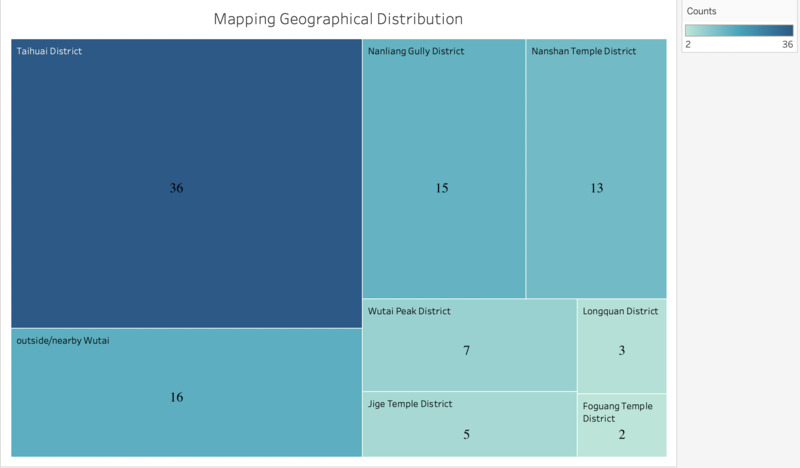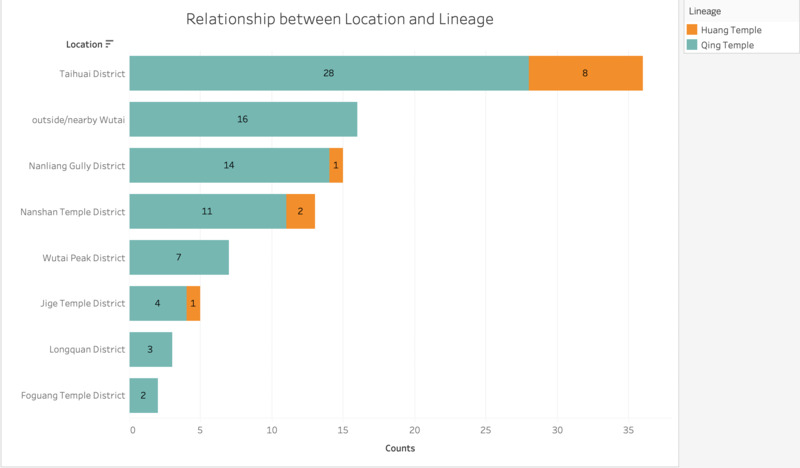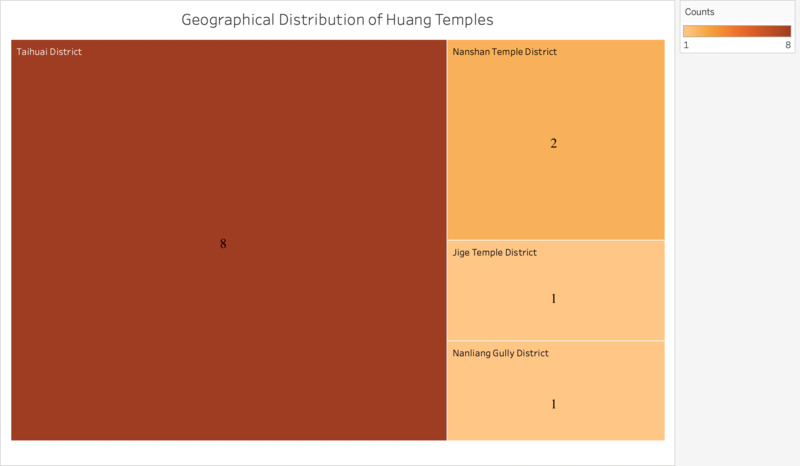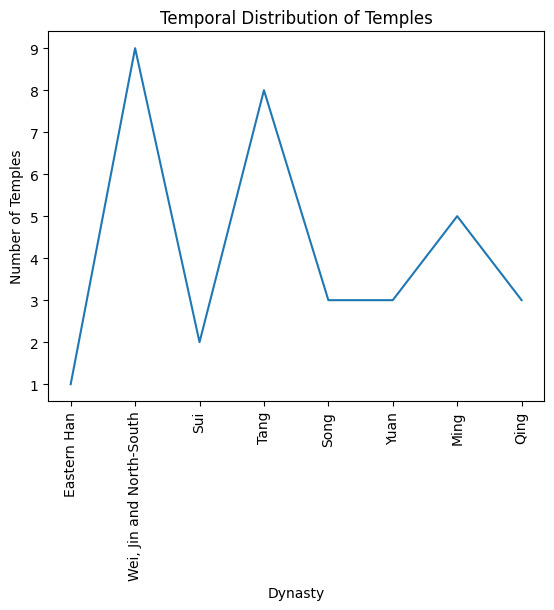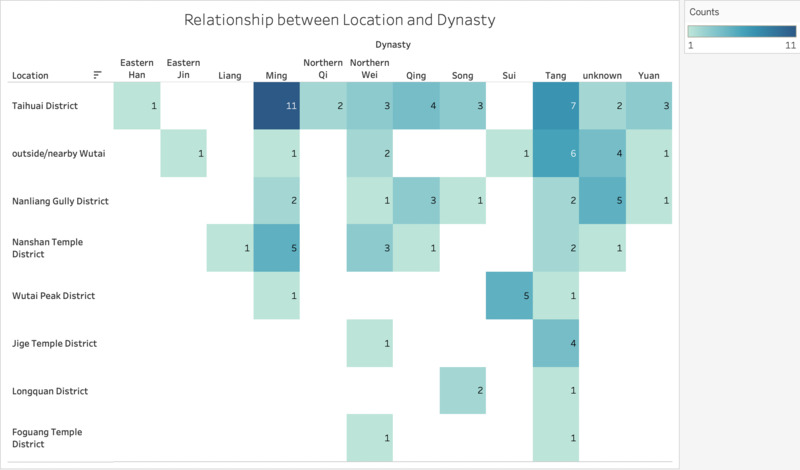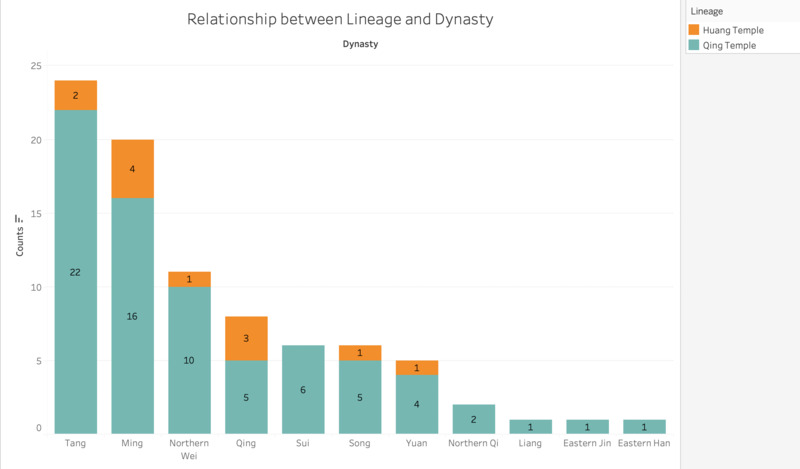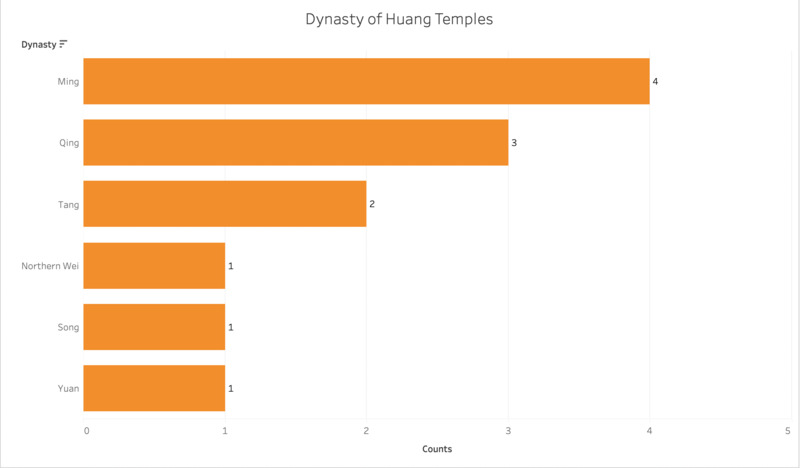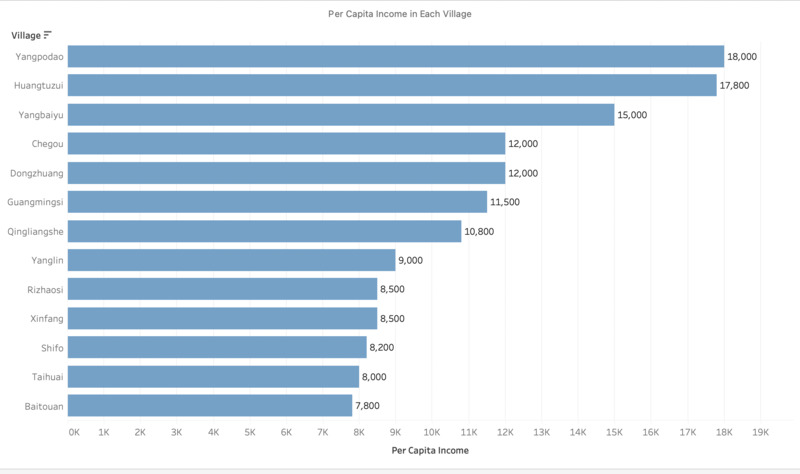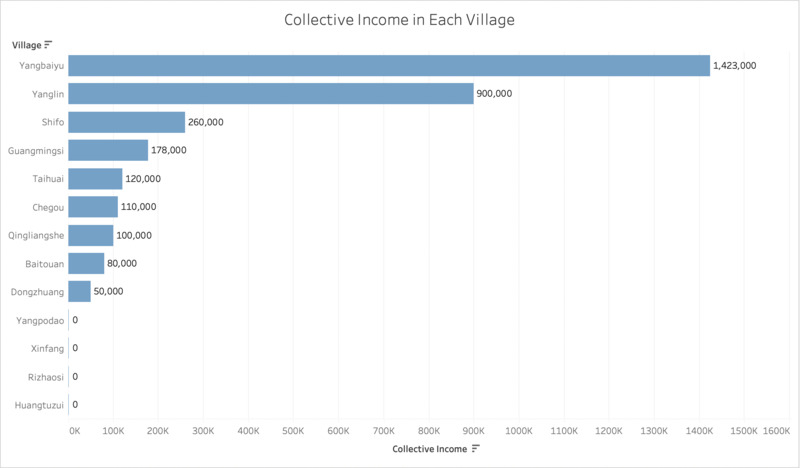Where are the temples in Mount Wutai located?
The most concentrated area of temples is Taihuai District, where there are 36 temples.
Both Qing and Huang temples are mostly located in Taihuai District.
Why in this area?
Firstly, this district is located in the central part of Mount Wutai which means it is easier for pilgrims to enter. Secondly, the terrain here is flat, which is conducive to the construction of temples. After more and more temples formed a temple cluster, the emperors were more willing to choose here. As a result, the Taihuai community in the center of Taihuai District started to exist.
How about other areas?
In addition, there are also more than 10 temples located in Nanliang Gully District and Nanshan Temple District. Besides, in the area outside or nearby Wutai there are 16 temples located.
